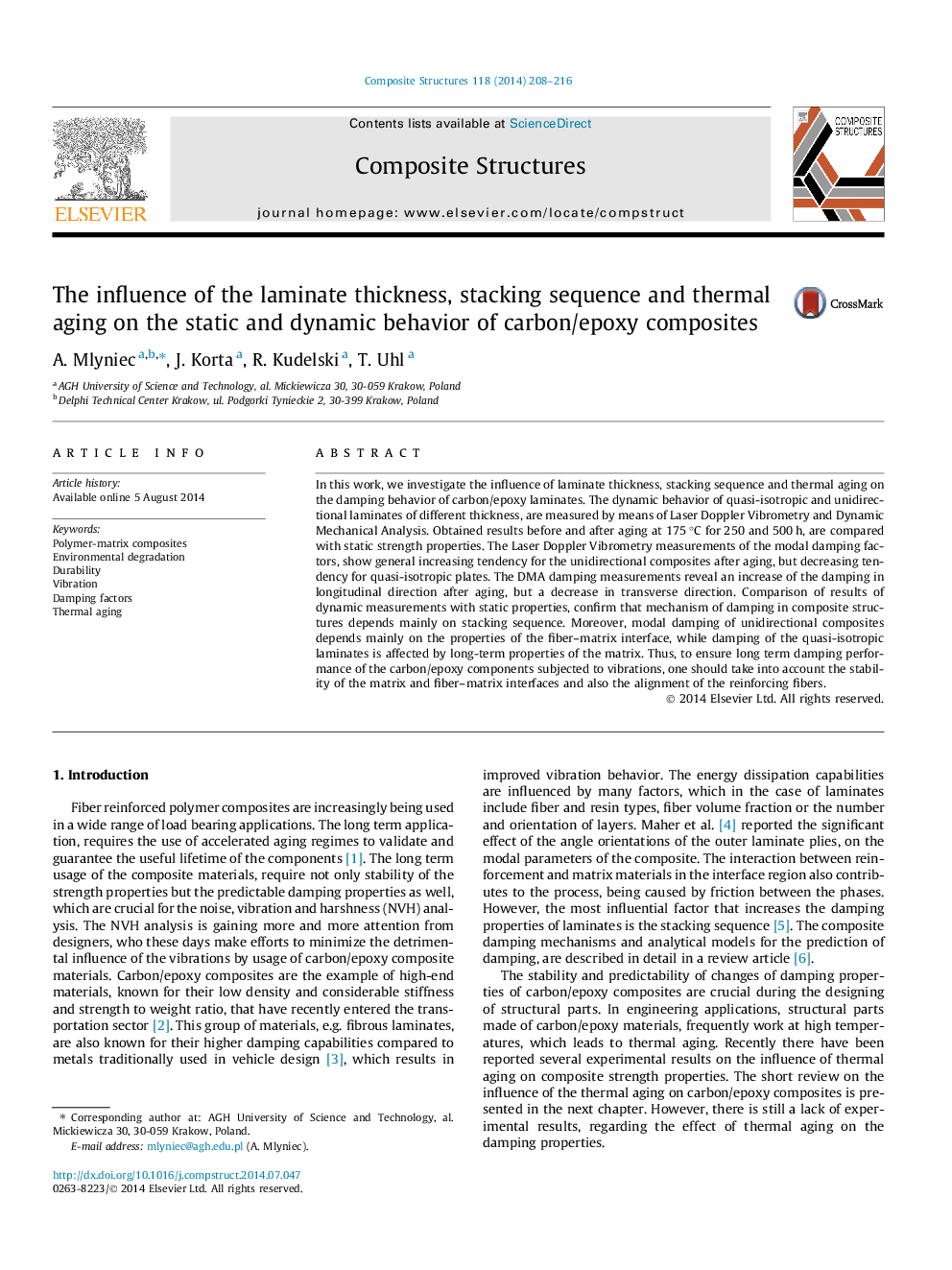| Article ID | Journal | Published Year | Pages | File Type |
|---|---|---|---|---|
| 6707502 | Composite Structures | 2014 | 9 Pages |
Abstract
In this work, we investigate the influence of laminate thickness, stacking sequence and thermal aging on the damping behavior of carbon/epoxy laminates. The dynamic behavior of quasi-isotropic and unidirectional laminates of different thickness, are measured by means of Laser Doppler Vibrometry and Dynamic Mechanical Analysis. Obtained results before and after aging at 175 °C for 250 and 500 h, are compared with static strength properties. The Laser Doppler Vibrometry measurements of the modal damping factors, show general increasing tendency for the unidirectional composites after aging, but decreasing tendency for quasi-isotropic plates. The DMA damping measurements reveal an increase of the damping in longitudinal direction after aging, but a decrease in transverse direction. Comparison of results of dynamic measurements with static properties, confirm that mechanism of damping in composite structures depends mainly on stacking sequence. Moreover, modal damping of unidirectional composites depends mainly on the properties of the fiber-matrix interface, while damping of the quasi-isotropic laminates is affected by long-term properties of the matrix. Thus, to ensure long term damping performance of the carbon/epoxy components subjected to vibrations, one should take into account the stability of the matrix and fiber-matrix interfaces and also the alignment of the reinforcing fibers.
Related Topics
Physical Sciences and Engineering
Engineering
Civil and Structural Engineering
Authors
A. Mlyniec, J. Korta, R. Kudelski, T. Uhl,
